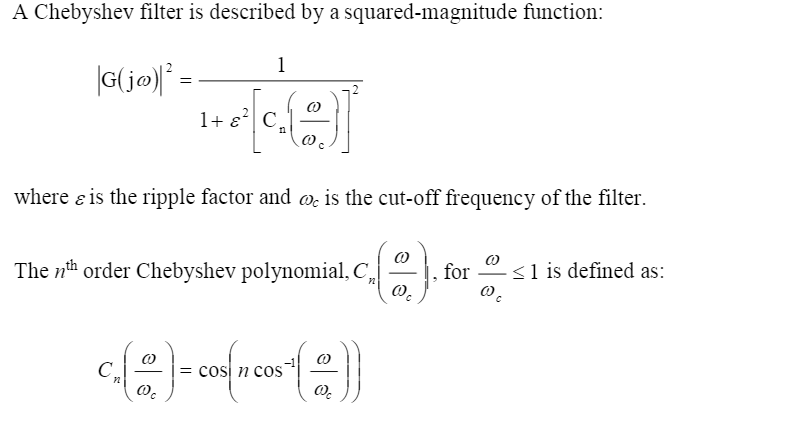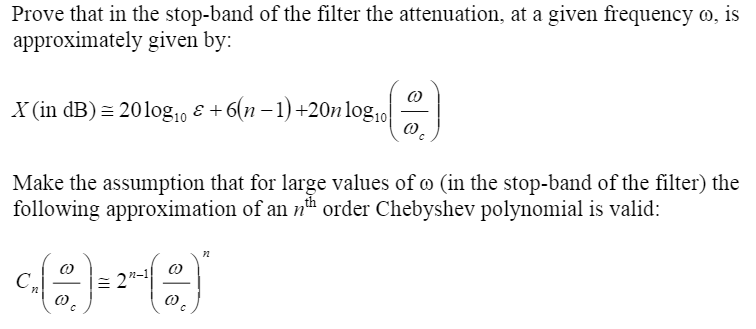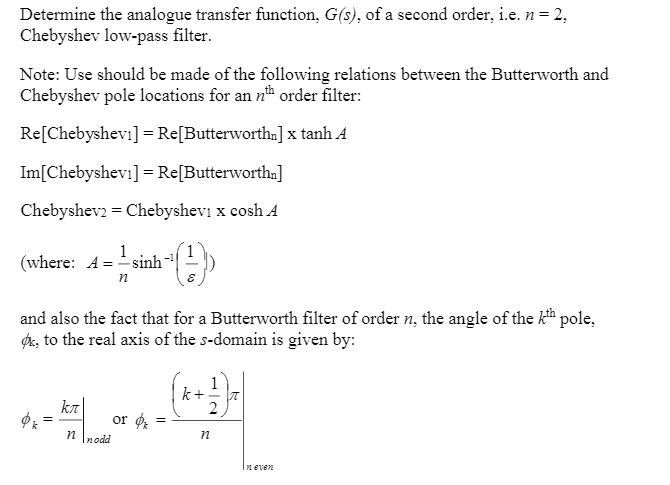Answered step by step
Verified Expert Solution
Question
1 Approved Answer
Could I please have the worked solution to the following question: A Chebyshev filter is described by a squared-magnitude function: G(j)2=1+2[Cn(c)]21 where is the ripple
Could I please have the worked solution to the following question:




Step by Step Solution
There are 3 Steps involved in it
Step: 1

Get Instant Access to Expert-Tailored Solutions
See step-by-step solutions with expert insights and AI powered tools for academic success
Step: 2

Step: 3

Ace Your Homework with AI
Get the answers you need in no time with our AI-driven, step-by-step assistance
Get Started


